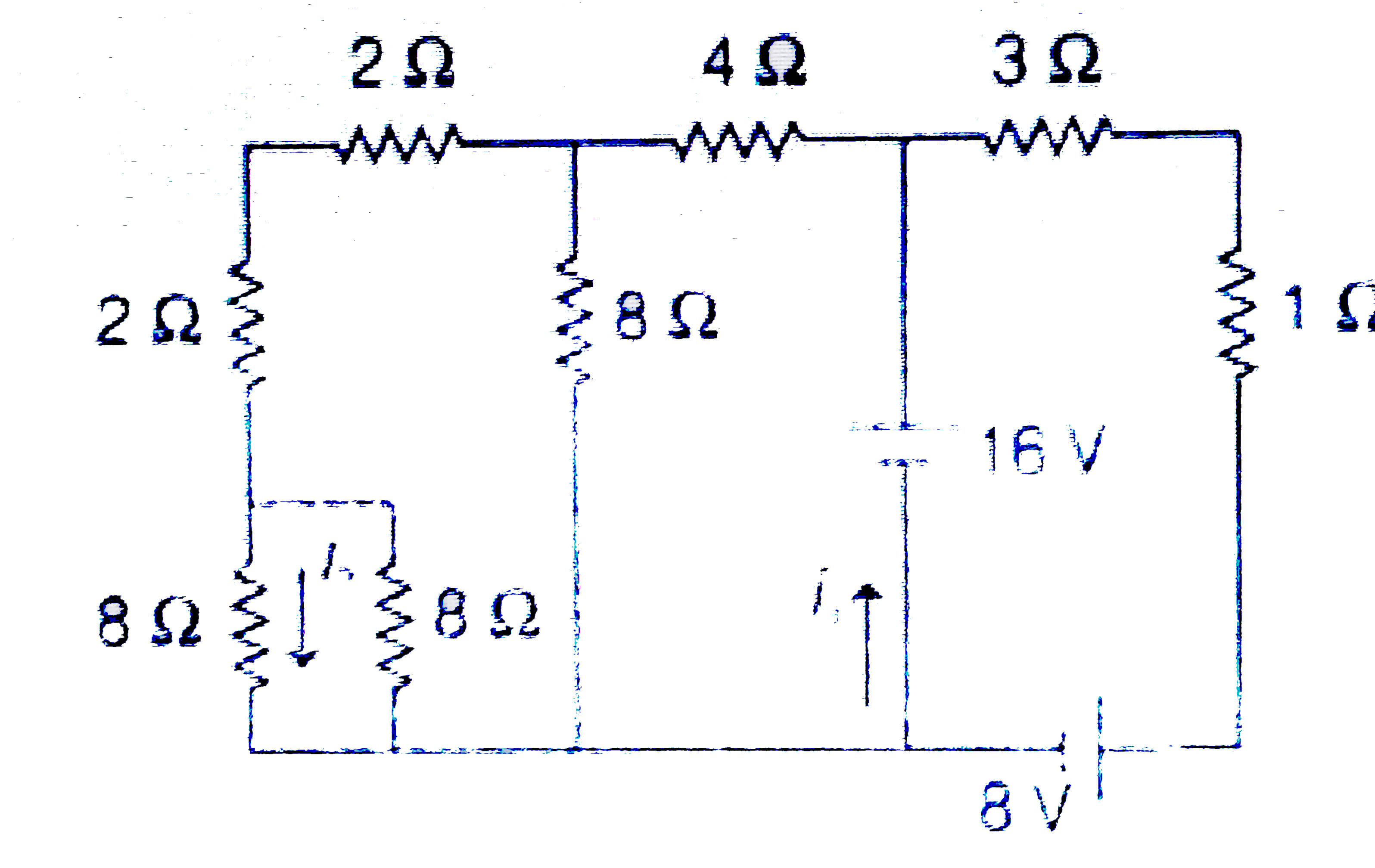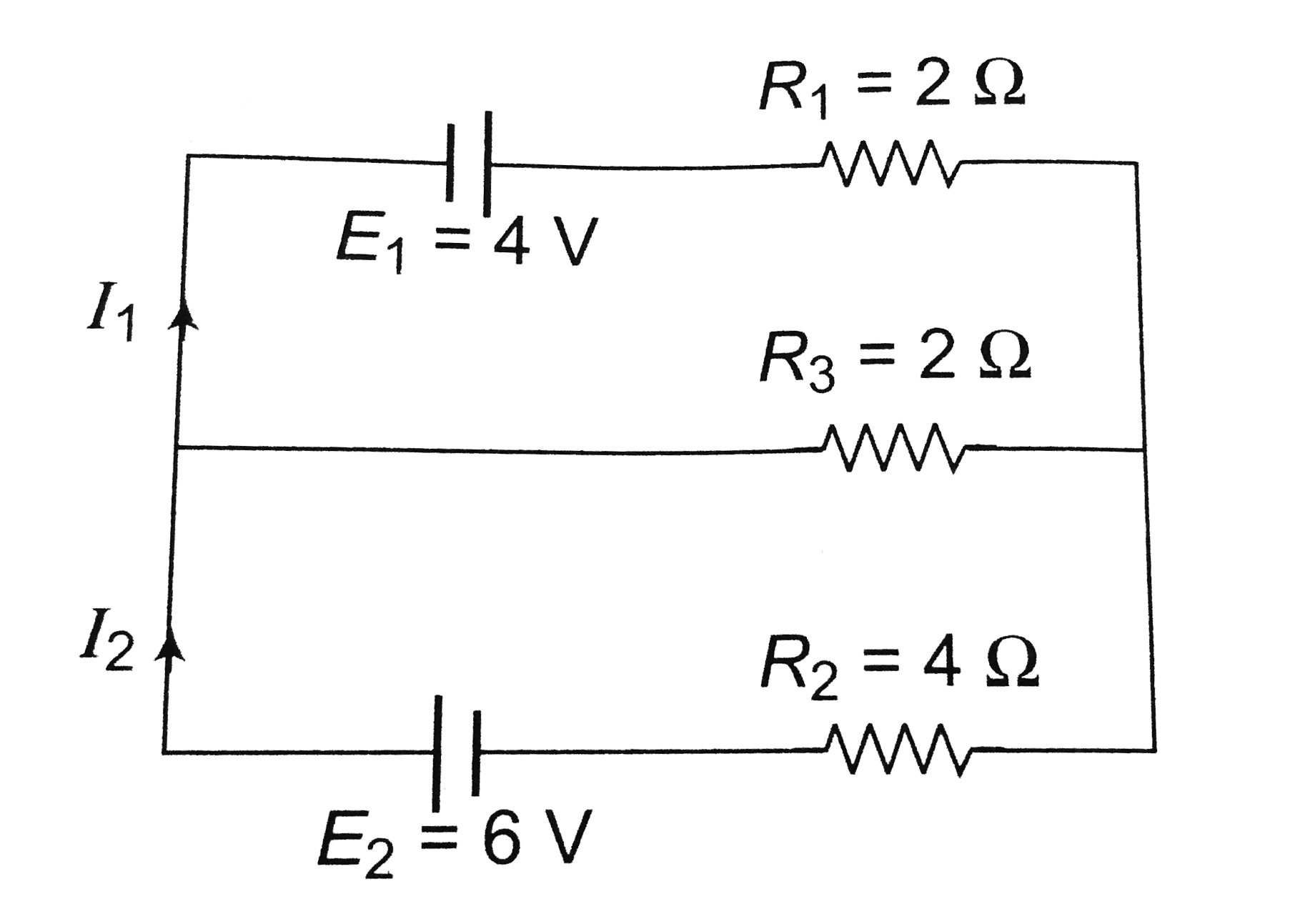In the circuit shown in figure :
R=10Ω,L=√310H,R2=20Ω and C=√32mF. Current in L−R1 circuit is I1 in C−R1 circuit is I2 and the main current is I

Phase difference between I1 and I2 is
A
0∘
B
90∘
C
180∘
D
60∘
Video Solution
Text Solution
The correct Answer is:B
Tanϕ1=ωLR1 , Tanϕ2=1ωCR2
∴Δϕ=ϕ1~ϕ2
|
Topper's Solved these Questions
- ALTERNATING CURRENTBook:NARAYNAChapter:ALTERNATING CURRENTExercise:LEVEL - I (H.W)
Explore 23 Videos
- ALTERNATING CURRENTBook:NARAYNAChapter:ALTERNATING CURRENTExercise:LEVEL - II(H.W)
Explore 13 Videos
- ALTERNATING CURRENTBook:NARAYNAChapter:ALTERNATING CURRENTExercise:LEVEL - V
Explore 83 Videos
- ATOMIC PHYSICSBook:NARAYNAChapter:ATOMIC PHYSICSExercise:LEVEL-II (H.W)
Explore 14 Videos
Similar Questions
Knowledge Check
In the circuit shown in figure :
R=10Ω,L=√310H,R2=20Ω and C=√32mF. Current in L−R1 circuit is I1 in C−R1 circuit is I2 and the main current is I
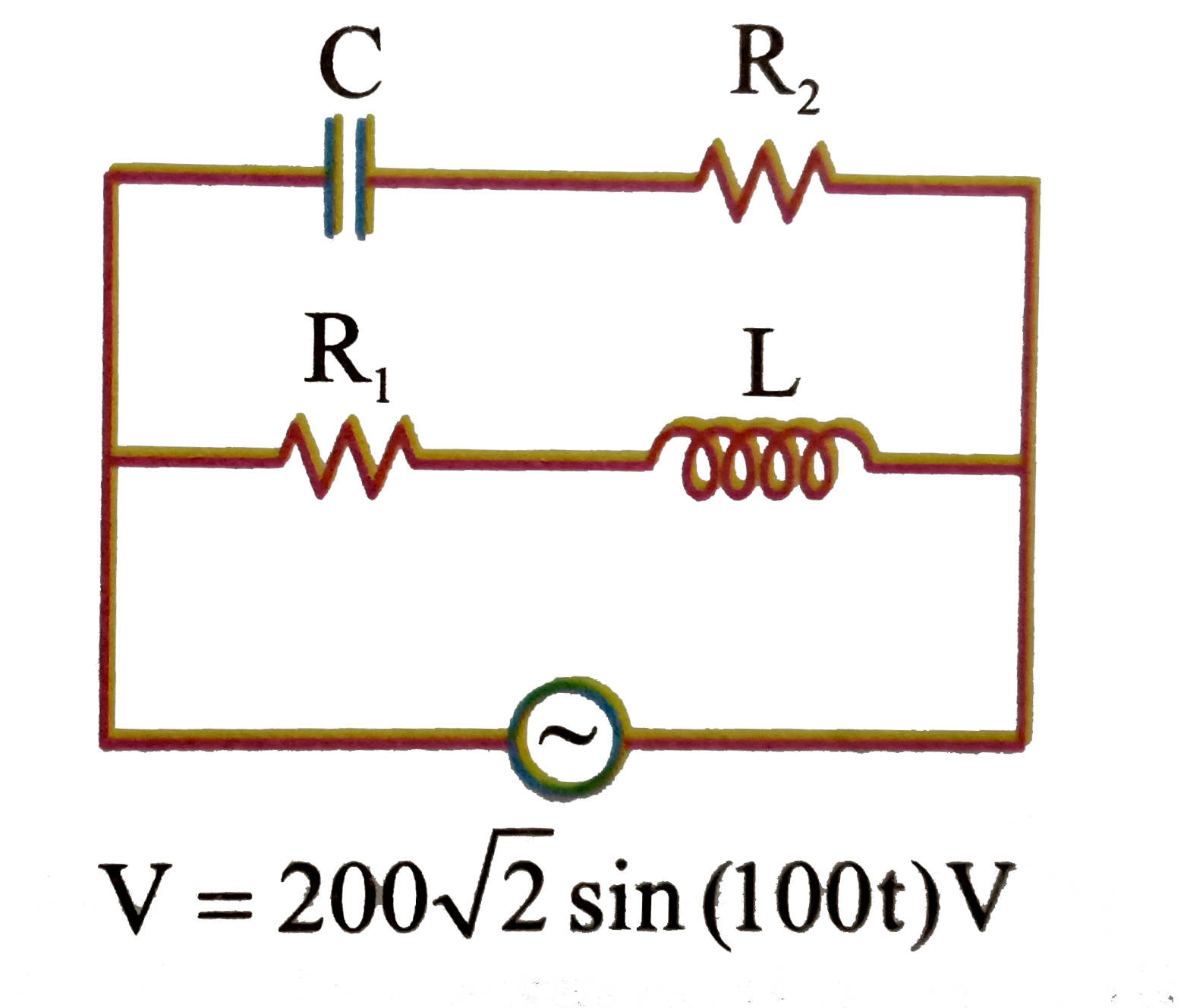
At some instant I1 in the circuit is 10√2A, then at this instant current I will beA20AB10√2AC20√2AD25AIn the circuit shown in figure :
R=10Ω,L=√310H,R2=20Ω and C=√32mF. Current in L−R1 circuit is I1 in C−R1 circuit is I2 and the main current is I

At some instant current in L−R1 circuit is 10A. At the same instant current in C−R2 branch will beA5AB5√2AC5√6AD5√3AIn the shown AC circuit phase different between current I1 and I2 is
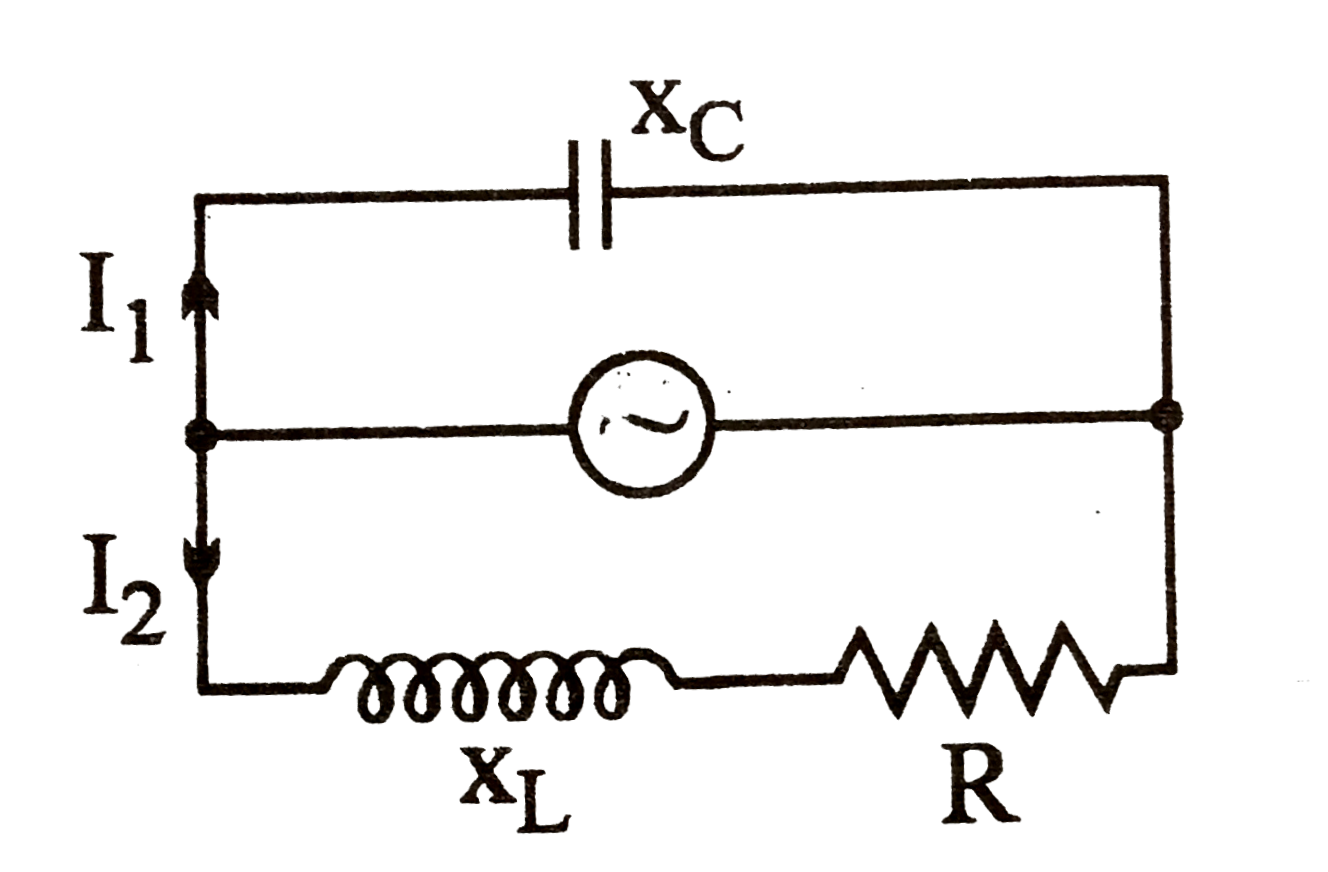 Aπ2−tan−1xLRBtan−1(xL−xC)RCπ2+tan−1xLRDtan−1(xL−xC)R+π2
Aπ2−tan−1xLRBtan−1(xL−xC)RCπ2+tan−1xLRDtan−1(xL−xC)R+π2
In the circuit shown, the currents i1 and i2 are
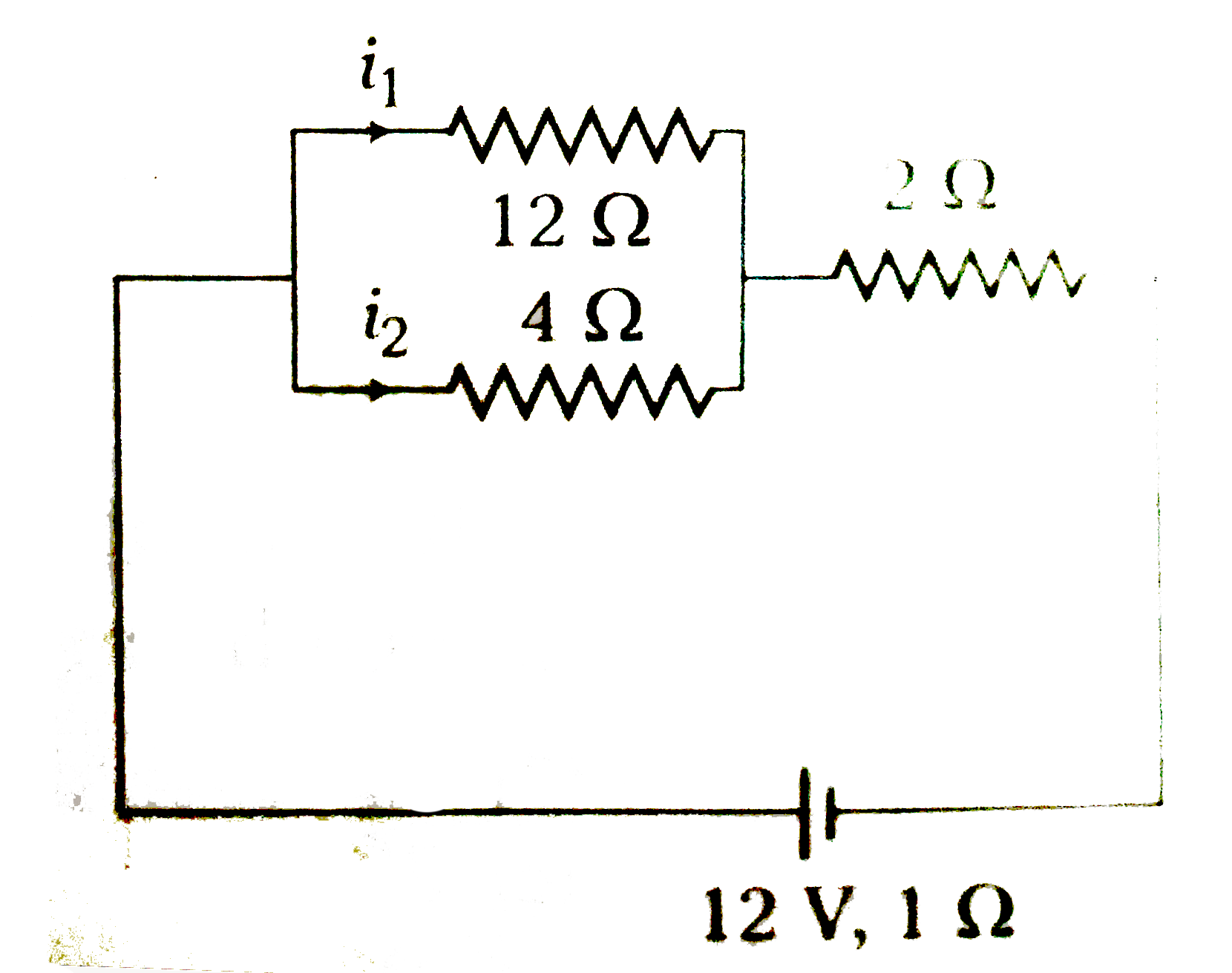
View SolutionIn the circuit as shown in figure, the ratio of current i1/i2 is
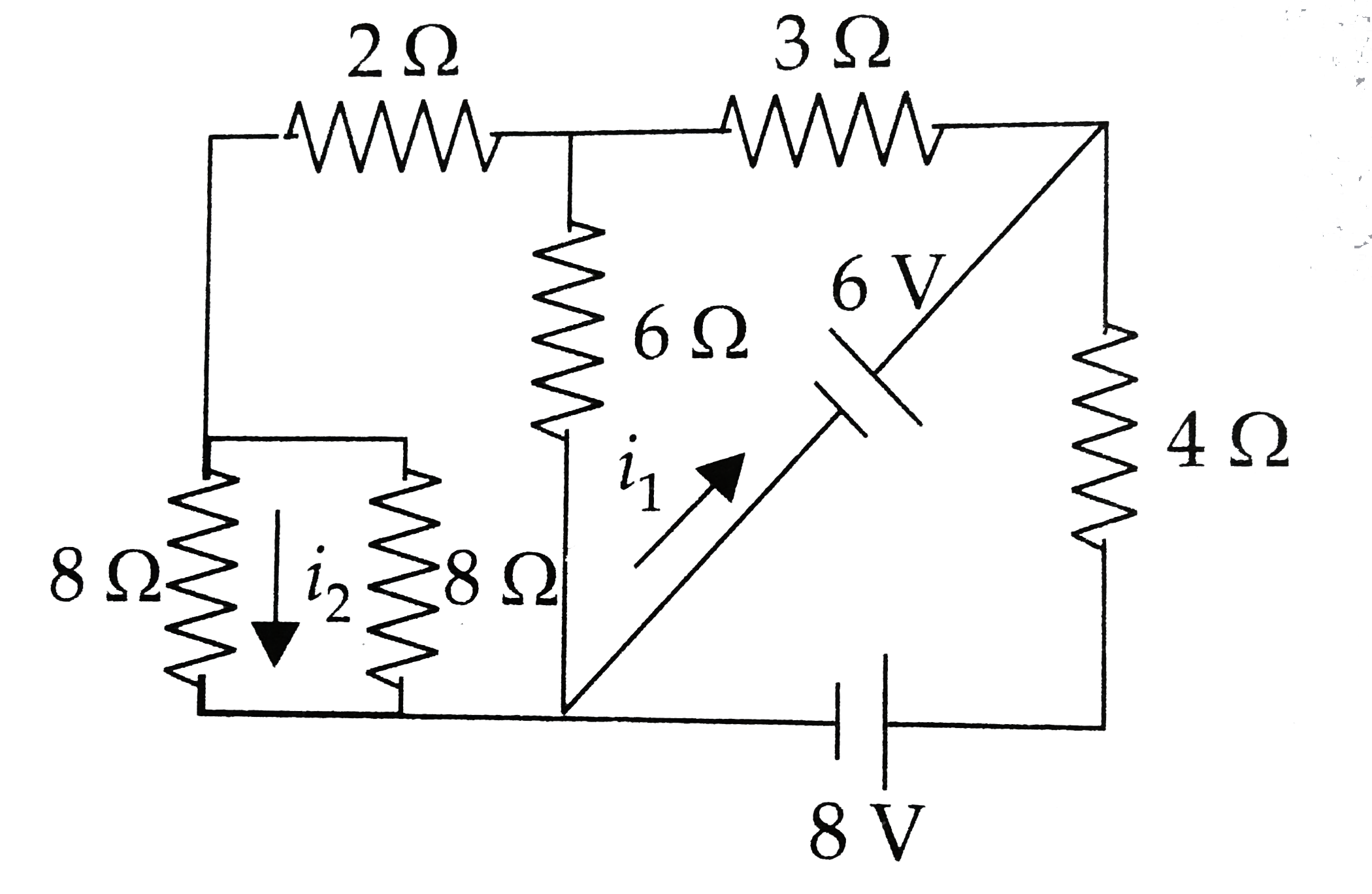
View Solution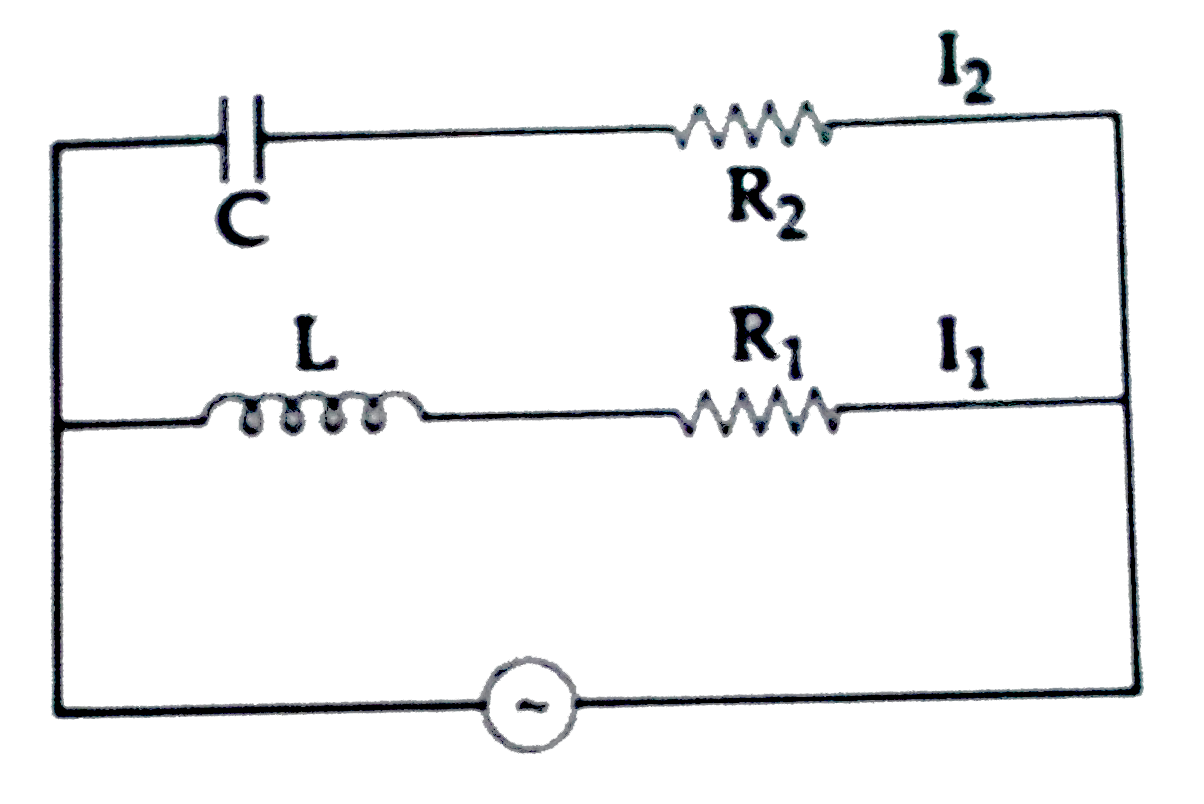
In the value circuit, C=√32μF,R2=20ω,L=√310H, and R1=10ω .Current in L−R1 path is I1 and in C−R2 path it is I2. The voltage of A.C source is given by, V=200√2sin(100t) volts. The phase difference between I2 and I1 is :
View Solution
In the value circuit, C=√32μF,R2=20ω,L=√310H, and R1=10ω .Current in L−R1 pathsis I1 and in C−R2 path it is I2. The voltage of A.C source is given by, V=200√2sin(100t) volts. The phase difference between I2 and I2 is :
View SolutionIn the circuit shown in figure
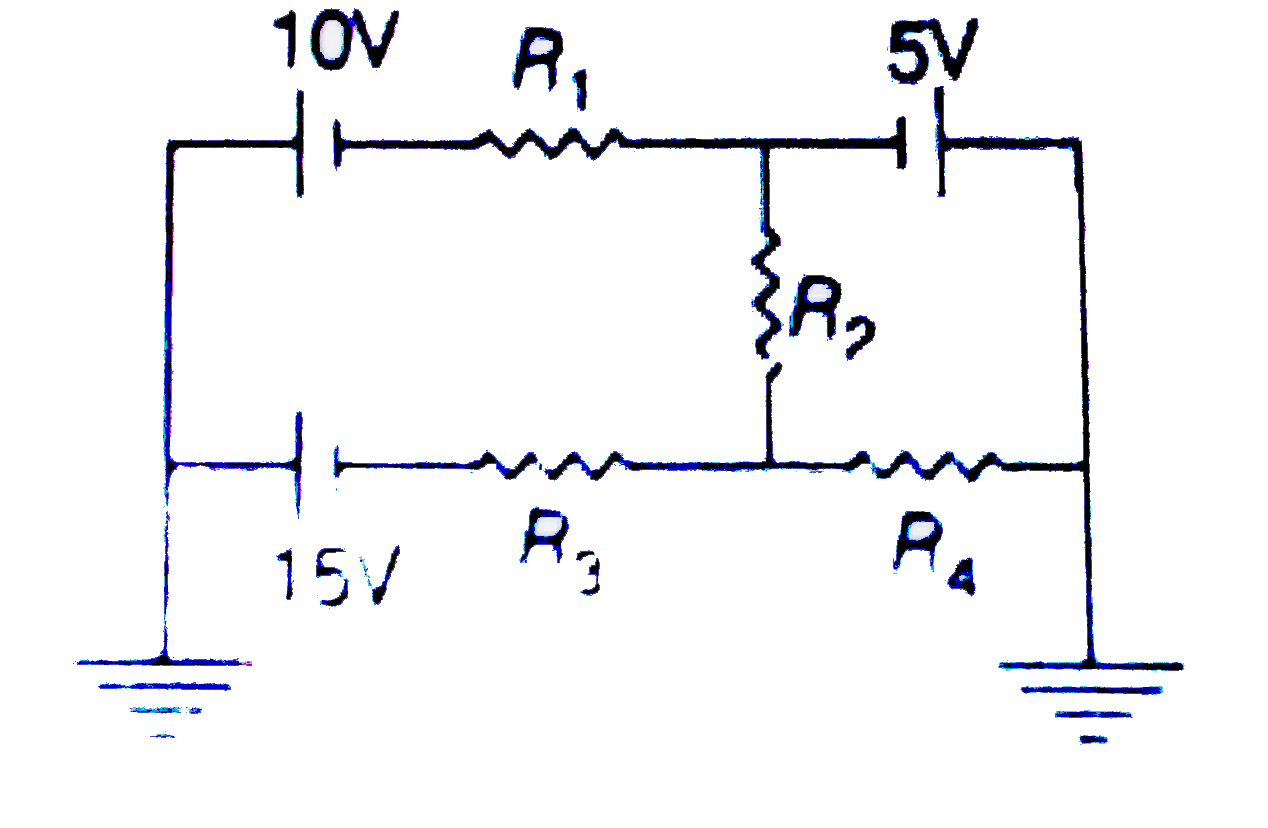
Current through R2 is zero if R4=2Ω and R3=4Ω In this case
View Solution


